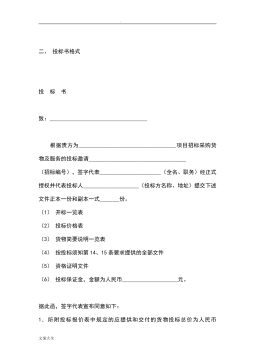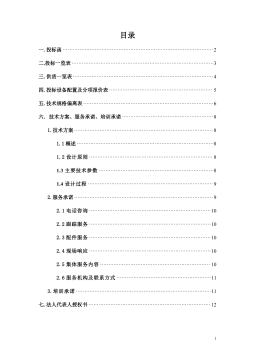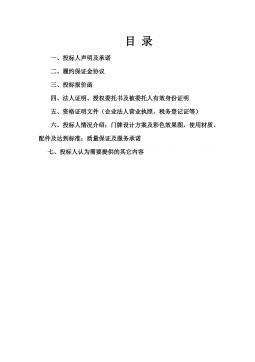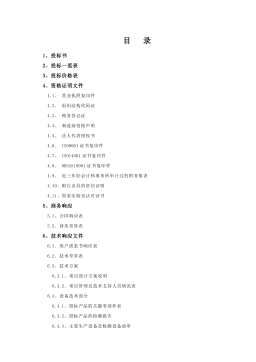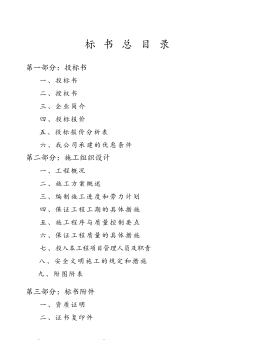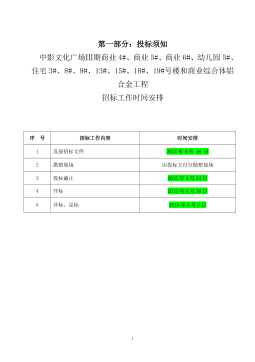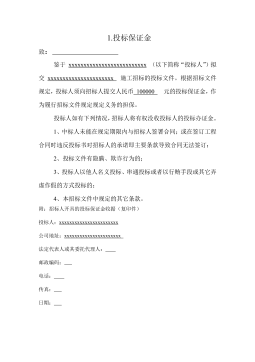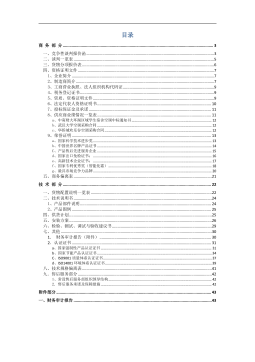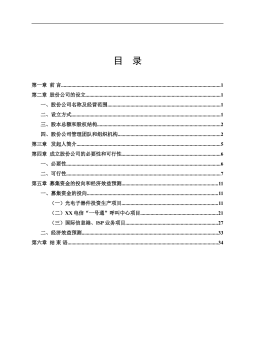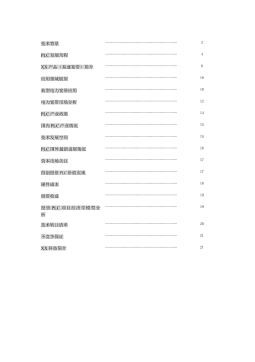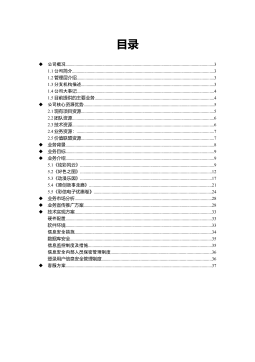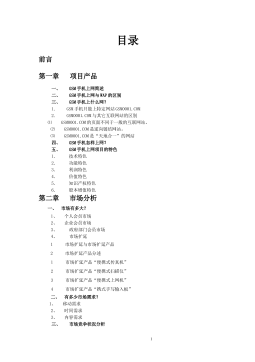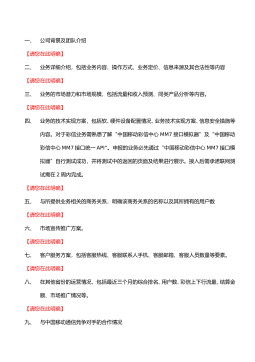基于因子模型的上证50指数跟踪研究
VIP免费
硕士学位论文
IV
摘要
股票指数跟踪就是建立由一定数量的股票所组成的组合,使其表现尽可能地
与被跟踪的基准指数的表现相接近。指数跟踪应用极其广泛,指数基金管理、组
合保险策略、对冲策略、市场中性策略、股指期货和标的之间的交易、加强监管
等等都与指数跟踪相关。随着我国证券投资基金的不断发展和证券市场指数体系
的不断完善,指数基金和新型指数化投资产品的不断涌现,指数跟踪受到众多学
者和实务工作者的日益重视,它对于引导分散化投资和价值型投资,促进资本市
场健康发展意义重大。
国内对于指数跟踪的研究很多,但他们往往基于在样期间的收益率误差最小
化得出优化权重,而对于基准和组合的价格误差最小化的研究很少,而价格层面
的误差是买入并持有被动投资策略和实务工作者关注的重点;另外,大多数国内
研究不考虑指数成份的动态特性,没考虑指数和复制组合的价格的时间序列间的
动态关系。指数跟踪要建立一个由一定数量的证券组成的跟踪组合,使其与基准
指数的跟踪误差中尽量减少长期低频成分,传统的指数跟踪方式并不必然达到这
种目的;更者,现存的国内指数跟踪研究对指数的价值和收益大都直接从数据库
收集下载,没考虑指数是怎样计算得出,即较少考虑指数的成份股权重结构体系,
而这是一特别重要的信息。基于此,本文研究了股票价格的动态因子模型,计算
了指数的成份股权重,以价格层面的误差最小化为目标,建立模型对上证50指数
进行跟踪求解,并与传统的指数跟踪方式相比较,得出了基于动态因子模型的指
数跟踪更优的结论。
本论文主体可以分为四大章:第一章:导论部分;第二章:指数跟踪和跟踪
误差;第三章:跟踪误差优化模型;第四章:应用因子模型于指数跟踪的实证研
究;第五章:结语。
第一章为导论部分。包括本论文选题的背景和意义,国内外相关文献的回顾
和总结,本文的研究思路和结构,本文的创新之处和研究方法。
第二章为研究切入点,即指数跟踪必然要考虑被跟踪的基准指数。本章先对
指数的定义、特征、作用等作了简短概述,对本文所跟踪的基准指数—上证 50 指
数的成份股调整、指数价值及其成份股权重计算、指数的修正调整作了较详细的
介绍,接着对指数跟踪的理论基础作了介绍,最后对作为指数跟踪的必然结果的
跟踪误差的度量和影响因素作了较详细的分析。
第三章,由于跟踪误差是指数跟踪的重点关注对象和优化目标,那么跟踪误
硕士学位论文
V
差优化模型就是解决指数跟踪的重点内容,在本章中,笔者详细讨论了二次误差
优化模型、均值绝对偏差优化模型、向下均值绝对偏差优化模型、最小最大模型
及向下最小最大化模型,对它们的目标函数、各模型之间的联系、实际应用等作
了较仔细的分析,为下一章的实证打下了基础。
第四章,则是数据和实证研究部分,是将因子模型与跟踪误差优化模型相结
合,是本文的主体。在第一节,笔者讨论了股价的线性因子模型,用因子模型定
义了指数和跟踪组合价值,指出了应用因子模型于指数跟踪以改善跟踪效果的条
件是保持指数与跟踪组合的因子结构相同;第二节对数据的选取和处理,对应用
因子模型于指数跟踪以尽量减少跟踪误差中的低频单整成分,使得跟踪组合的表
现和指数的表现尽量接近的实证过程和步骤(主要包括因子结构的估计、因子结
构的重构、优化求解三大步骤)做了深入详细的介绍;在第三节,先对传统的指
数跟踪与基于因子模型的指数跟踪的误差指标进行实证结论对比分析,接着对 5
种跟踪误差优化模型作了对比分析。
第五章则是结语部分。一方面对论文的实证结论进行总结;另一方面提出本
文研究的不足暨进一步研究方向。
关键词:上证50 指数;指数跟踪; 跟踪误差; 因子模型
硕士学位论文
VI
ABSTRACT
Stock index tracking is that setting up a portfolio which consisted of certain number
of shares and performing as close as possible to the benchmark index. Index tracking
shows widespread use, such as index fund management, portfolio insurance strategy,
hedging strategy, market-neutral strategy, exchange between stock index futures and the
subjects, even supervision and so on. As continuously development of security
investment fund and continuously improving of security market index system in China,
lots of index funds and new index investment products emerge. Index tracking attracts
more and more attention of scholars and practitioners and plays a great part in guiding
value investment and diversification investment in promoting capital market
development.
There are many studies on index tracking theories and methods in mainland of
China, most of them use yield error minimization during sample periods to get
optimization weights, and studies on price error minimization between the benchmark
and portfolio are few. But buy and hold passive investment strategy and practitioners
focus more on price error. In addition,most domestic studies do not consider dynamic
nature of index and dynamic relationship between index and portfolio with their price
time series. Index tracking is that setting up a portfolio which consists of a certain
number of shares, and eliminates long-term low-frequency components possibly.
Traditional methods do not satisfy above purposes. Moreover, existing domestic studies
on index tracking do not consider how to calculate index, it means that they also do not
consider the weights system of index component stocks. For this reason, this paper
studies dynamic factor model of stock price, aims at error minimization on price level,
considers weights system of index component stocks, applies above goals to actual
index tracking and compares empirical results with traditional methods. Finally, this
paper concludes that the index tracking with dynamic factor model is better.
This paper can be divided into four main chapters: Chapter I, introduction; Chapter
II, the index tracking and the tracking error; Chapter III, tracking error optimizing
model; Chapter IV, the empirical test on using factor model for index tracking; and
Chapter V, the summary conclusions.
The first chapter is introduction. It includes research background, significance of
硕士学位论文
VII
index tracking, literature review, and so on.
Chapter II is for the entry point, that is, index tracking must be related to
benchmark index. In this chapter, we briefly define index and its characteristics, and so
on. Then we introduce Shanghai 50 Index by component stock adjustment, index price
calculation and component stock weights in detail. We also discuss theoretical foundation
of index tracking and influencing factors and measurement of tracking error .
Chapter III focus on optimizing model for index tracking because tracking error is
optimization goal for index tracking. In this chapter, we discuss the models such as
Quadratic, MAD, MADD, MinMax and DminMax, their objective functions, relationships
between them and application of these models.
Chapter IV is the part of data and empirical study. It is the main body of this paper.
Linear factor model is discussed in Section I, and index value and tracking portfolio are
explained by factor model; In Section II, data is selected, and the steps and process with
factor model on index tracking are discussed for eliminating low frequency or interated
components in tracking error, and tracking portfolio performs as close as possible to
benchmark index; In the third section, this paper compares traditional methods of index
tracking with index tracking based on factor model, and analyzes 5 optimization
models.
Chapter V is conclusion. On the one hand, we summarize empirical conclusion; on
the other hand, we put forward the weakness of this paper and the direction for further
studying .
Key words:The shanghai stock 50 index; index tracking; tracking error; factor model
硕士学位论文
VIII
目录
第一章 导论...........................................................................................................1
第一节 论文选题的背景和意义.....................................................................1
第二节 国内外相关文献.................................................................................2
第三节 论文的研究思路及结构.....................................................................7
第四节 论文的创新及研究方法.....................................................................9
第二章 指数跟踪和跟踪误差.............................................................................11
第一节 证券市场指数...................................................................................11
第二节 指数跟踪的理论基础.......................................................................14
第三节 跟踪误差的度量...............................................................................15
第四节 影响跟踪误差的因素.......................................................................17
第五节 本章小结...........................................................................................18
第三章 跟踪误差优化模型.................................................................................19
第一节 跟踪误差优化模型...........................................................................19
第二节 价格层面的跟踪误差优化模型的实际应用...................................23
第三节 本章小结...........................................................................................26
第四章 应用因子模型于指数跟踪的实证研究.................................................27
第一节 因子模型...........................................................................................27
第二节 数据和实证过程...............................................................................30
第三节 实证结论分析...................................................................................39
第四节 本章小结...........................................................................................43
结语
.....................................................................................................................45
参考文献
.........................................................................................................47
附录
.....................................................................................................................51
硕士学位论文
1
第一章 导言
本章指出了论文选题的背景和意义,对国内外相关文献进行了较详细的回顾
和总结,接着指出了本文的研究思路和结构,并对本文的创新之处和研究方法作
了简要的说明。
第一节 论文选题的背景和意义
一、选题的背景
伴随着证券市场的发展,中国证券市场指数体系已逐步建立和完善,到目前
为止,我国已有上证 180 指数,上证 50 指数,深证 100 指数,深证成份指数,中
信标普 300、新华富时 200A 等等,随着指数的增多,指数基金和新型指数化投资
产品也不断涌现,指数跟踪受到众多学者和实务工作者的日益重视。股票指数跟
踪就是建立由一定数量的股票所组成的组合,使其表现尽可能地与被跟踪的基准
指数的表现相接近。国内对于指数跟踪研究很多,但他们往往基于在样期间的收
益率误差最小化得出优化权重;另外,指数跟踪要使跟踪误差中尽量减少长期低
频成分,传统的指数跟踪方式并不必然达到这种目的;更者,现存的国内指数跟
踪研究较少考虑指数的成份股权重结构体系,而这是一特别重要的信息。基于此,
能用价格误差最小化得出优化权重吗?怎样使跟踪误差中没有或者至少最小化长
期低频成分?考虑指数的成份股权重信息又会怎样呢?这些问题就自然而然的产
生了。
二、选题的理论和实际意义
根据有效市场假说,从长期来看,证券的价格反映所有公开的信息、甚至内
部信息,股票市场具备高度的效率,因而基于指数跟踪的被动投资(如买入并持有)
可能是不错的选择。其次,马柯维茨提出了新的投资模型——均值方差模型(MV),
他建议投资者尽可能建立分散化的投资组合;根据夏普的投资组合理论,我们也
可以发现具有最优风险—收益组合的投资组合就是市场投资组合,而能获得市场
投资组合收益的就是追踪市场指数的指数基金。另外,随机漫步理论和混沌理论
也说明了被动指数跟踪的必要性。
指数跟踪应用极其广泛,股票指数跟踪是指数基金管理的日常工作内容,其
跟踪基准指数的误差是衡量基金经理业绩的一个重要指标;象组合保险策略这样
摘要:
展开>>
收起<<
硕士学位论文IV摘要股票指数跟踪就是建立由一定数量的股票所组成的组合,使其表现尽可能地与被跟踪的基准指数的表现相接近。指数跟踪应用极其广泛,指数基金管理、组合保险策略、对冲策略、市场中性策略、股指期货和标的之间的交易、加强监管等等都与指数跟踪相关。随着我国证券投资基金的不断发展和证券市场指数体系的不断完善,指数基金和新型指数化投资产品的不断涌现,指数跟踪受到众多学者和实务工作者的日益重视,它对于引导分散化投资和价值型投资,促进资本市场健康发展意义重大。国内对于指数跟踪的研究很多,但他们往往基于在样期间的收益率误差最小化得出优化权重,而对于基准和组合的价格误差最小化的研究很少,而价格层面的误差是...
作者:周伟光
分类:高等教育资料
价格:150积分
属性:59 页
大小:420.72KB
格式:PDF
时间:2024-09-20


